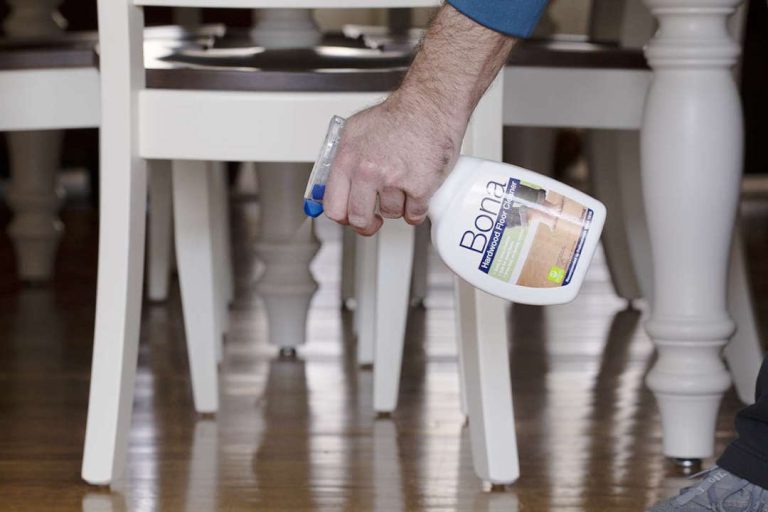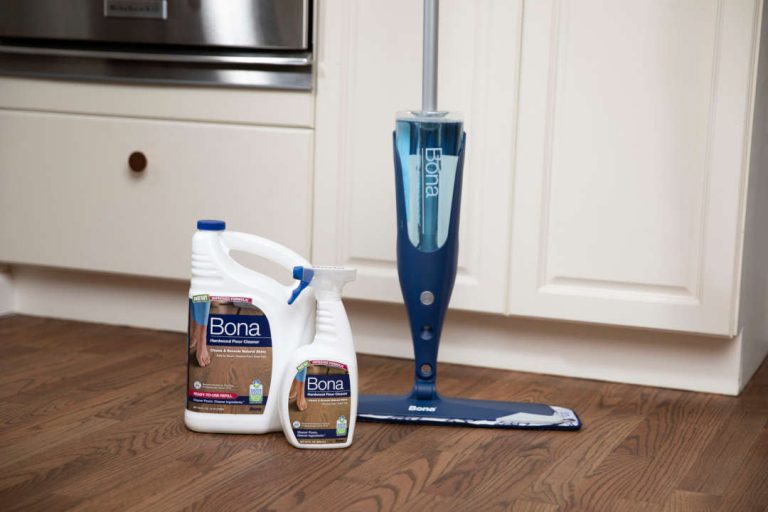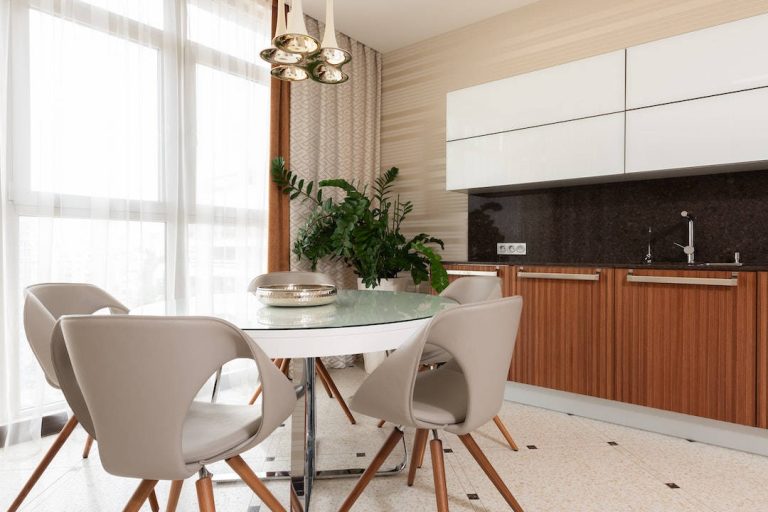Maintaining a clean kitchen is essential for a healthy home environment, but traditional cleaning products often contain harsh chemicals that can be harmful to both our health and the environment. Fortunately, there are safer alternatives available, including a non-toxic kitchen cabinet cleaner.
One simple recipe for a non-toxic kitchen cabinet cleaner involves using ingredients commonly found in many households. Here’s how to make it:
Ingredients:
- 1 cup distilled white vinegar
- 1 cup water
- 1 tablespoon olive oil
- Optional: a few drops of essential oil for fragrance (such as lemon or lavender)
Instructions:
- Mix the distilled white vinegar and water in a spray bottle.
- Add the olive oil to the mixture and shake well to combine.
- If desired, add a few drops of essential oil for a pleasant scent.
- To use, spray the cleaner onto a clean cloth and wipe down your kitchen cabinets, focusing on areas with grease or grime.
- For stubborn spots, let the cleaner sit for a few minutes before wiping clean with a damp cloth.
Understanding the Dangers of Conventional Cleaners
When it comes to household cleaning, conventional cleaners have been the go-to for many years. These products promise a sparkling clean home, free from dirt, germs, and grime. However, the chemicals that make these cleaners so effective often come with hidden dangers that can affect our health and environment. It’s important to understand the risks associated with these products to make informed decisions about the cleaning supplies we use in our homes.
1. Harmful Chemicals
Many conventional cleaners contain a cocktail of chemicals such as ammonia, chlorine bleach, and synthetic fragrances. These substances can be toxic if ingested, inhaled, or even touched. For example, ammonia can cause severe irritation to the eyes and respiratory tract, while chlorine bleach can lead to chemical burns and respiratory problems. Synthetic fragrances, which are added to many products to leave a fresh scent, often contain phthalates, which are linked to hormonal disruptions and reproductive issues.
2. Respiratory Issues
The use of conventional cleaners can contribute to indoor air pollution. VOCs (volatile organic compounds) are emitted by a wide range of products, including many household cleaners. These gases can have short- and long-term adverse health effects, particularly on lung health. Exposure to VOCs can trigger asthma attacks, cause throat irritation, and lead to chronic respiratory problems.
3. Skin and Eye Irritation
Direct contact with conventional cleaning products can cause skin and eye irritation. The harsh chemicals can lead to rashes, burns, and other forms of irritation. People with sensitive skin are especially at risk, as their skin may react more severely to these powerful substances.
4. Environmental Impact
The environmental impact of conventional cleaners is another cause for concern. Many of these chemicals do not break down easily and can accumulate in the waterways, soil, and even wildlife. They can disrupt aquatic ecosystems and harm animals that come into contact with contaminated water or soil. Additionally, the production and disposal of these chemical cleaners contribute to pollution and the depletion of non-renewable resources.
5. Poisoning Risk
Household cleaners are among the top substances responsible for poisoning in the home, especially for children. The bright colors and sometimes sweet scents of these products can be attractive to young children who may ingest them, leading to accidental poisoning. Keeping these products out of reach of children or switching to safer alternatives can significantly reduce this risk.
Long-Term Health Concerns
Long-term exposure to the chemicals in conventional cleaners may be linked to more serious health concerns. Some studies suggest a correlation between prolonged use of certain cleaning products and issues such as hormonal imbalances, fertility problems, and even an increased risk of certain cancers.
While conventional cleaners can effectively sanitize and clean our homes, they come with a range of potential dangers to human health and the environment. Being aware of these risks allows consumers to seek out safer alternatives and take necessary precautions when using these products. As we become more conscious of the products we bring into our homes, we can choose options that are not only effective but also safe for our families and the planet.
Benefits of Using a Non-Toxic Kitchen Cabinet Cleaner
Maintaining a clean and hygienic kitchen is essential for the health and well-being of any household. Kitchen cabinets, in particular, can accumulate a surprising amount of dirt, grease, and bacteria over time. While there are numerous cleaning products available, the choice of using a non-toxic kitchen cabinet cleaner comes with a multitude of benefits, both for personal health and the environment.
1. Safety for Health
Non-toxic kitchen cabinet cleaners are made without harmful chemicals that can pose serious health risks. Traditional cleaners often contain volatile organic compounds (VOCs), ammonia, or bleach, which can cause respiratory issues, skin irritation, and other health problems when inhaled or when they come into contact with skin. Non-toxic cleaners use natural ingredients that are less likely to provoke allergic reactions or health issues, making them a safer choice for families, especially those with young children, elderly members, or pets.
2. Environmental Protection
Eco-friendly, non-toxic cleaners are designed to be biodegradable and have a minimal impact on the environment. They are often made from sustainable ingredients that do not pollute waterways or contribute to the depletion of non-renewable resources. By choosing non-toxic options, consumers help reduce the ecological footprint of their cleaning practices.
3. Effective Cleaning
Contrary to common belief, non-toxic cleaners can be just as effective as their chemical-laden counterparts. Advances in green chemistry have led to the development of natural cleaning agents derived from plants and minerals that effectively cut through grease and grime. These natural ingredients are tough on dirt but gentle on the surfaces of your kitchen cabinets, preserving their finish and integrity.
4. Improved Indoor Air Quality
Using non-toxic cleaners helps improve the indoor air quality of your home. Conventional cleaning products can emit noxious fumes that linger long after cleaning is done, contributing to indoor air pollution. Non-toxic cleaners, on the other hand, often have natural, pleasant fragrances or are fragrance-free, providing a fresh and clean environment without the use of artificial perfumes.
5. Cost-Effectiveness
Many non-toxic cleaners are concentrated and can be diluted with water, meaning that a little goes a long way. This makes them a cost-effective option in the long run. Additionally, you can often use everyday household items like vinegar, baking soda, and lemon juice to create effective non-toxic cleaning solutions at home, saving money and reducing the need for plastic packaging.
6. Peace of Mind
Ultimately, using a non-toxic kitchen cabinet cleaner offers peace of mind. Knowing that you’re not exposing your family to harmful chemicals or contributing to environmental damage can make the routine task of cleaning your kitchen cabinets a more positive experience.
The benefits of using a non-toxic kitchen cabinet cleaner are extensive. They provide a safe, environmentally friendly, effective, and economical solution for keeping your kitchen cabinets spotless and preserving the health of your home and the planet. Choosing non-toxic cleaning products is a simple yet impactful way to care for your family’s health and contribute to a greener world.
DIY Non-Toxic Kitchen Cabinet Cleaner Recipes
Making your own non-toxic kitchen cabinet cleaner is simple and cost-effective. Here are a few easy recipes to try:
- Vinegar and Water Solution:
- Mix equal parts distilled white vinegar and water in a spray bottle.
- Spray onto cabinets and wipe clean with a microfiber cloth.
- Vinegar’s acidity helps cut through grease and grime, leaving cabinets clean and shiny.
- Baking Soda Paste:
- Mix baking soda with water to form a paste.
- Apply the paste to stubborn stains or sticky residue on cabinets.
- Let sit for a few minutes, then scrub with a soft-bristled brush or sponge.
- Rinse with water and wipe dry.
- Olive Oil and Lemon Essential Oil Polish:
- Mix 1/4 cup olive oil with a few drops of lemon essential oil in a spray bottle.
- Shake well to combine.
- Spray onto cabinets and buff with a clean cloth to restore shine and condition wood surfaces.
These DIY recipes are customizable and can be adjusted based on your cleaning needs and preferences. Experiment with different ingredients and proportions to find the perfect solution for your kitchen cabinets.
Choosing Non-Toxic Commercial Cleaners
If DIY isn’t your style, there are plenty of non-toxic commercial cleaners available on the market. When choosing a product, look for labels that indicate the cleaner is free of harsh chemicals like ammonia, bleach, and phthalates. Additionally, certifications like Green Seal and EcoLogo can help you identify products that meet strict environmental and safety standards.
Reputable brands that offer non-toxic kitchen cabinet cleaners include Method, Mrs. Meyer’s Clean Day, and Seventh Generation. These companies prioritize ingredient transparency and sustainability, using plant-based formulas and recyclable packaging.
Before purchasing a non-toxic cleaner, read reviews and check customer ratings to ensure it meets your cleaning needs. Some products may be better suited for specific surfaces or types of stains, so it’s essential to choose the right cleaner for your kitchen cabinets.
Tips for Safe and Effective Cleaning
To get the most out of your non-toxic kitchen cabinet cleaner, follow these tips for safe and effective cleaning:
- Always test a small, inconspicuous area before applying the cleaner to the entire surface.
- Use a soft-bristled brush or microfiber cloth to avoid scratching the cabinet finish.
- Avoid over-saturating the cabinets with cleaner or water, as excess moisture can cause warping or damage.
- Wipe cabinets dry after cleaning to prevent water spots and streaks.
- Regularly dust and wipe down cabinets to prevent buildup and maintain a clean, polished look.
By incorporating these tips into your cleaning routine, you can keep your kitchen cabinets looking their best while minimizing your exposure to harmful chemicals.
Frequently Asked Questions About Non-Toxic Kitchen Cabinet Cleaners
Q: Are non-toxic cleaners as effective as conventional cleaners?
A: Yes, many non-toxic cleaners are just as effective at removing dirt, grease, and grime as their conventional counterparts. However, some may require a bit more elbow grease or additional soaking time for stubborn stains.
Q: Can I use non-toxic cleaners on all types of kitchen cabinets?
A: Most non-toxic cleaners are safe for use on a variety of surfaces, including wood, laminate, and painted cabinets. However, it’s always a good idea to check the manufacturer’s recommendations or test a small area first to ensure compatibility.
Q: Are non-toxic cleaners safe for homes with children and pets?
A: Yes, non-toxic cleaners are generally safer for homes with children and pets because they do not contain harmful chemicals or emit toxic fumes. However, it’s still essential to keep cleaning products out of reach of small children and pets to prevent accidental ingestion.
Q: Can I mix different non-toxic cleaners together for a more potent solution?
A: It’s generally not recommended to mix different cleaning products together, even if they’re non-toxic. Mixing certain ingredients can create harmful reactions or diminish the effectiveness of the cleaners. Stick to using one cleaner at a time and follow the manufacturer’s instructions for best results.
Conclusion
witching to non-toxic kitchen cabinet cleaners is a simple yet impactful way to create a healthier, safer, and more environmentally friendly home. Whether you choose to make your own DIY cleaners or opt for commercial products, prioritizing non-toxic alternatives benefits not only your family’s health but also the planet. By understanding the dangers of conventional cleaners, embracing non-toxic solutions, and following safe and effective cleaning practices, you can enjoy clean and beautiful kitchen cabinets without compromising your well-being or the environment. Let’s make the switch to non-toxic cleaning and create a brighter, greener future for all.
- How to Clean Kitchen Floor Grout Naturally: Easy DIY Methods - June 25, 2024
- How to Clean Thermoplastic Kitchen Cabinets Properly: Expert Tips - June 19, 2024
- How to Clean Mica Kitchen Cabinets: A Simple Guide - June 19, 2024






